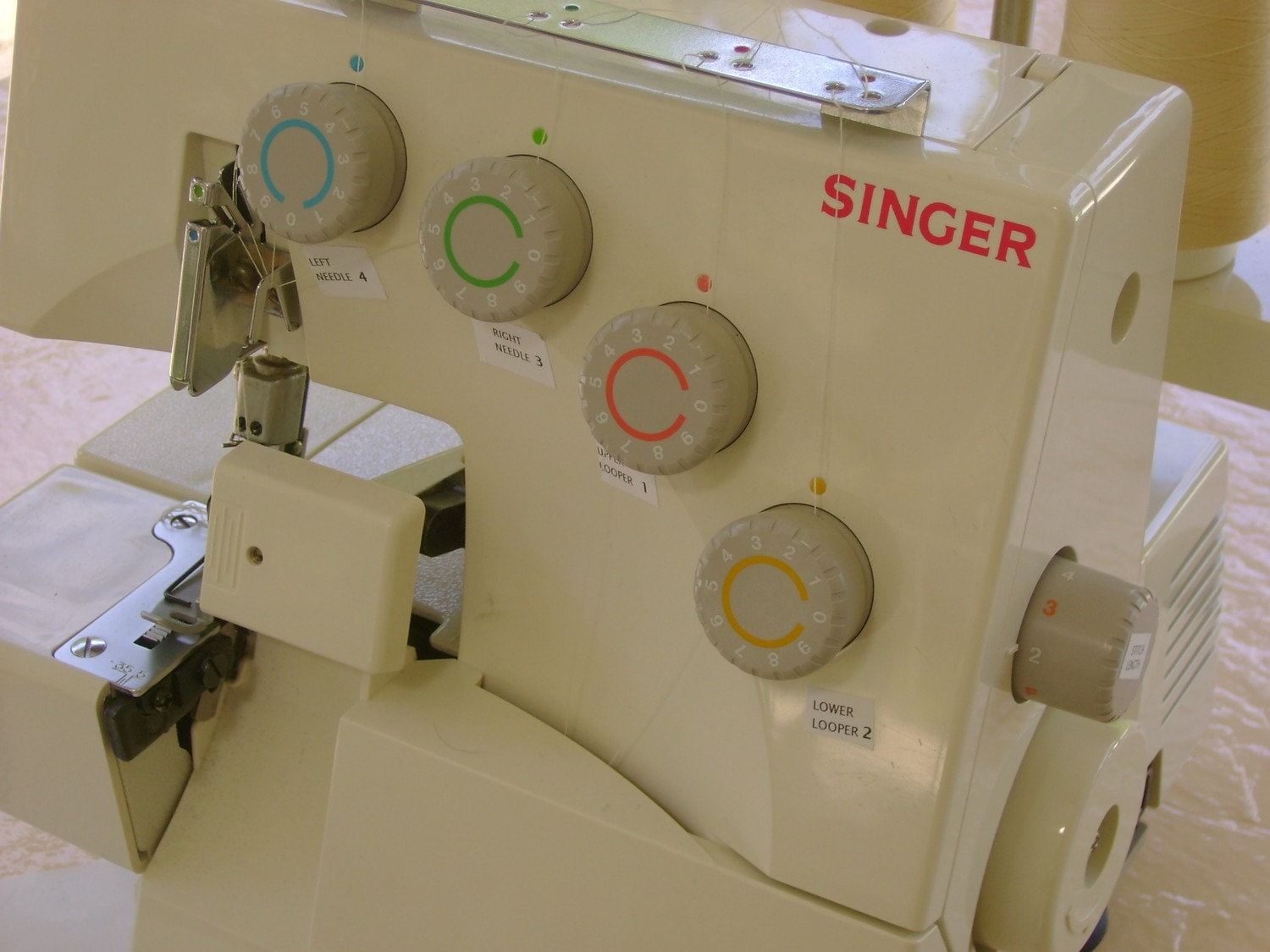

- Singer serger quantumlock 4 how to#
- Singer serger quantumlock 4 manual#
- Singer serger quantumlock 4 professional#
If either thread can be moved easily or appears uneven, it is too loose.If fabric puckers, one or both threads are too tight.Adjust each dial separately to determine which thread needs to be loosened. If threads lock on the underside of the fabric, either the lower looper threads are too tight, pulling to the underside, or the upper looper threads are too loose, spilling over the edge.If threads lock on the upper side of the fabric, either the upper looper threads are too tight, pulling the upper side, or the lower looper threads are too loose, spilling over the edge.If a needle thread forms loose loops on the underside of the fabric or if the seam pulls open, the needle thread is too loose. If a looper thread can be moved easily or if it appears uneven, the looper thread is too loose.If fabric puckers crosswise under stitches, one or both looper threads are too tight.If fabric puckers lengthwise, one or both needle threads are two tight.Tips for Analyzing Tension Problems 4-thread Overlock Stitches Compare your stitches to the pictures below if you are uncertain about which tension dial needs adjusting. When needle tensions are correctly adjusted, the threads rest smoothly on the top and are slightly visible on the underside. When looper tensions are correctly adjusted for a balanced overedge stitch, two opposing threads lock together at the edge of the fabric. Continue to turn tension dials, one at a time, to see how each thread affects the stitch. Return the tension to the original setting. The fabric puckers when one of the threads it too tight. Examine the sample again to see how the tension has changed. Return the tension dial to the original setting.Ĭontinue to sew, turning the same tension dial to a higher number. The thread that has been adjusted will be slack or loose. As you sew, examine the stitches to see the change in tension. Start sewing, and slowly turn the tension dial for one of the threads to a lower number.


Practice adjusting the tensions by sewing on a long strip of fabric. Although factory and recommended settings will not give perfect tension for all fabrics, they do provide a good point of reference, especially for beginners.

Singer serger quantumlock 4 manual#
Your instruction manual may also give recommended settings for all stitch types. If the machine has numbered tension dials, write down the preset numbers before practicing. Overlockers have the tensions preset at the factory for basic seaming. Learning to adjust the correct thread or threads takes practice. Adjust too tight threads first as they may cause the other threads to seem loose even when they are not. When the overlocker stitch has poor tension, only one thread may need adjustment. This helps you to visualise and understand each thread path and how the threads interact with each other.
Singer serger quantumlock 4 how to#
When learning how to adjust the tension, thread the machine with colours of thread that match the colour coding on the machine. If a machine that has been sewing with correct tension after the thread is changed check the threading before adjusting the tension dials. If the stitch is not correct, check for proper threading before turning the tension dial.Įven if only one thread has been snagged or has slipped out of a thread guide, it can appear that the tension needs adjusting. General Purpose Foot, Screwdrivers, Clean Pocket, Extra Knife, Spool Caps, Anti-Spill Thread Nets, Oiler, Brush, Tweezers, Needles, Cone Adapters, Soft Dust Cover.Tension should be adjusted properly when sewing with an overlocker. Differential Feed allows you to sew super stretchy fabrics without the wavy distortion and sheers without puckering. This model also has a selection of cover stitches, which can be used to sew cover stitch hems – just like those on store-bought garments. Sew a decorative edge around a fleece blanket for an extra bit of flair. Sew a narrow hem on a set of napkins, or stitch up a knit top with seams that stretch with the fabric without popping.
Singer serger quantumlock 4 professional#
You can use 2 threads, 3 threads, 4 threads or 5 threads for a wide variety of stitch combinations. You'll love the professional results this serger gives your projects. Seams and seam finishes – just like you see on store-bought garments – are possible thanks to the serger. The Professional 5 serger saves you time because it sews a seam and seam finish at the same time, while trimming away the excess seam allowance.


 0 kommentar(er)
0 kommentar(er)
